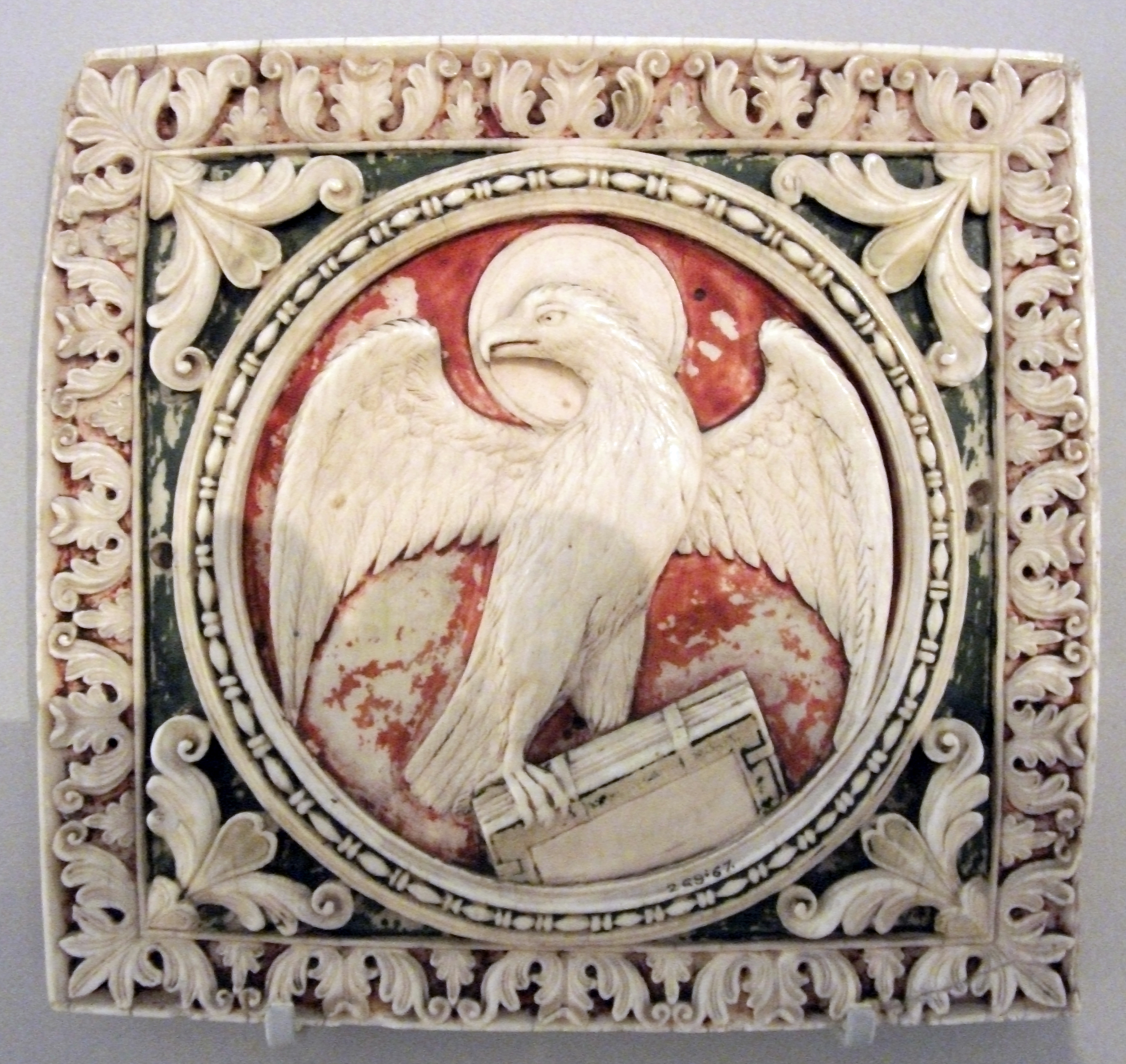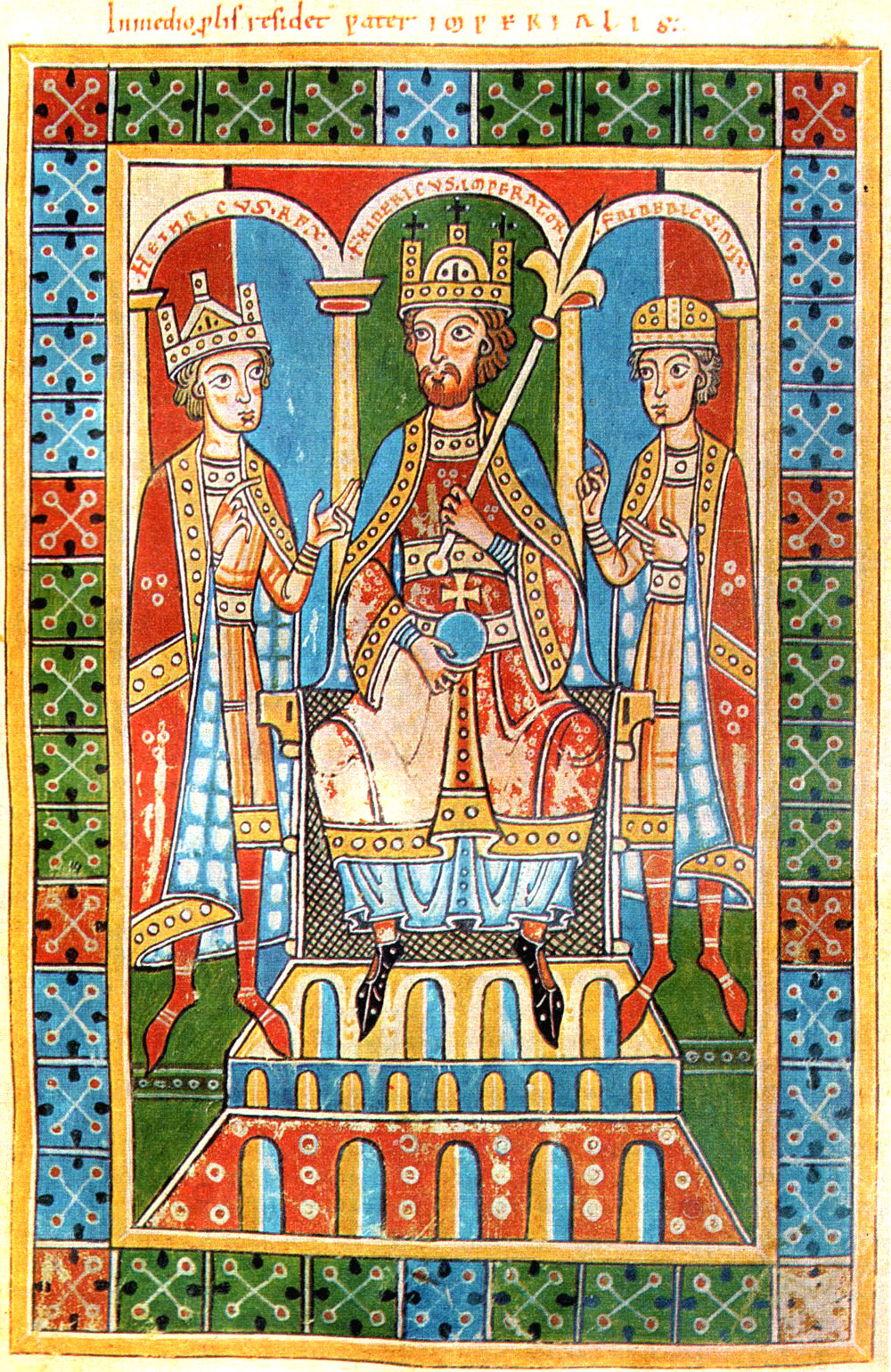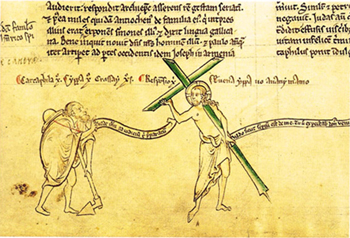|
Reichsadler
The ' (; "Imperial Eagle") is the heraldic eagle, derived from the Roman eagle standard, used by the Holy Roman Emperors, later by the Emperors of Austria and in modern coat of arms of Austria and Germany. The term is also translated as "Reich's Eagle." The same design has remained in use by the Federal Republic of Germany since 1950, albeit under the name ' ("Federal Eagle"). History Holy Roman Empire The ''Reichsadler'', i. e. the German Imperial Eagle, originated from a proto-heraldic emblem that was believed to have been used by Charlemagne, the first Frankish ruler whom the Pope crowned as Holy Roman Emperor in AD 800, and derived ultimately from the '' Aquila'', i. e. eagle standard, of the ancient Roman army. An eagle statue was erected on the roof of the Carolingian palace, and an eagle was placed on the orb of Emperor Otto III. Emperor Frederick Barbarossa popularised use of the eagle as the Imperial emblem by using it in all his banners, coats of arms, coins ... [...More Info...] [...Related Items...] OR: [Wikipedia] [Google] [Baidu] [Amazon] |
Coat Of Arms Of Germany
The coat of arms of Germany, also known as the , displays a black eagle (heraldry), eagle with a red beak, a red tongue and red feet on a golden field, which is blazoned: ''Or, an eagle displayed sable beaked langued and membered gules''. This is the (German language, German for ), formerly known as (, ). It is one of the oldest coats of arms in the world, and today the oldest national symbol used in Europe. It is a re-introduction of the coat of arms of the Weimar Republic (in use 1919–1935), which was adopted by the West Germany, Federal Republic of Germany in 1950. The current official design is due to (1887–1967) and was originally introduced in 1928. The German Empire of 1871–1918 had re-introduced the medieval coat of arms of the Holy Roman Emperors, in use during the 13th and 14th centuries (a black single-headed eagle on a golden background), before the emperors adopted the double-headed eagle, beginning with Sigismund, Holy Roman Emperor, Sigismund of Luxembur ... [...More Info...] [...Related Items...] OR: [Wikipedia] [Google] [Baidu] [Amazon] |
Flags Of The Holy Roman Empire
The flag of the Holy Roman Empire was not a national flag, but rather an imperial banner used by the Holy Roman Emperor; black and gold were used as the colours of the imperial banner, a black eagle on a golden background. After the late 13th or early 14th century, the claws and beak of the eagle were coloured red. From the early 15th century, a double-headed eagle was used. In 1804, Napoleon Bonaparte declared the First French Empire. In response to this, Emperor Francis II of the Habsburg dynasty declared his personal domain to be the Austrian Empire and became Francis I of Austria. Taking the colours of the banner of the Holy Roman Emperor, the flag of the Austrian Empire was black and gold. Francis II was the last Holy Roman Emperor, with Napoleon forcing the empire's dissolution in 1806. After this point, these colours continued to be used as the flag of Austria until 1918. The colours red and white were also significant during this period. When the Holy Roman Empire too ... [...More Info...] [...Related Items...] OR: [Wikipedia] [Google] [Baidu] [Amazon] |
Imperial Eagle
The eagle is used in heraldry as a charge, as a supporter, and as a crest. Heraldic eagles can be found throughout world history like in the Achaemenid Empire or in the present Republic of Indonesia. The European post-classical symbolism of the heraldic eagle is connected with the Roman Empire on one hand (especially in the case of the double-headed eagle), and with Saint John the Evangelist on the other. History A golden eagle was often used on the banner of the Achaemenid Empire of Persia. Eagle (or the related royal bird ''vareghna'') symbolized '' khvarenah'' (the God-given glory), and the Achaemenid family was associated with eagle (according to legend, Achaemenes was raised by an eagle). The local rulers of Persis in the Seleucid and Parthian eras (3rd-2nd centuries BC) sometimes used an eagle as the finial of their banner. Parthians and Armenians used eagle banners, too. European heraldry In Europe the iconography of the heraldic eagle, as with other he ... [...More Info...] [...Related Items...] OR: [Wikipedia] [Google] [Baidu] [Amazon] |
Henry VI, Holy Roman Emperor
Henry VI (German language, German: ''Heinrich VI.''; November 1165 – 28 September 1197), a member of the Hohenstaufen dynasty, was King of Germany (King of the Romans) from 1169 and Holy Roman Emperor from 1191 until his death. From 1194 he was also King of Sicily as the husband and co-ruler of Queen Constance I. Henry was the second son of Emperor Frederick Barbarossa and Beatrice I, Countess of Burgundy. Well educated in the Latin language, as well as Roman law, Roman and canon law, Henry was also a patron of poets and a skilled poet himself. In 1186 he married Constance of Sicily. Henry, stuck in the Hohenstaufen conflict with the House of Welf until 1194, had to enforce the inheritance claims by his wife against her nephew Count Tancred of Lecce. Henry's attempt to conquer the Kingdom of Sicily failed at the Siege of Naples (1191), siege of Naples in 1191 due to an epidemic, with Empress Constance captured. Based on an enormous ransom for the release and submission of King R ... [...More Info...] [...Related Items...] OR: [Wikipedia] [Google] [Baidu] [Amazon] |
Bust Of Charlemagne
The Bust of Charlemagne () is a reliquary from around 1350 which contains the Calvaria (skull), top part of Charlemagne's skull. The reliquary is part of the treasure kept in the Aachen Cathedral Treasury. Made in the Mosan region (the valley of the River Meuse), long a centre of high-quality metalwork, the bust is a masterpiece both of late Gothic art, Gothic metalwork and of figural sculpture. The Bust of Charlemagne, as a masterpiece of Mosan art#Metalwork, Mosan goldwork, initiated a height of silver-gilt Realism (arts), naturalistic reliquary busts. Description Created 500 years after the death of Charlemagne, the bust is an idealized representation, the facial structure, hair style and fleur-de-lys crown of which reflect 14th-century, not 9th-century fashion style. The skin is Repoussé and chasing, chased with silver and partially gilt; hair and beard are gilt. Damascening, Damascened silver eagle (heraldry), ''Reichsadler'', the Charge (heraldry), heraldic charge of the ... [...More Info...] [...Related Items...] OR: [Wikipedia] [Google] [Baidu] [Amazon] |
Holy Roman Emperor
The Holy Roman Emperor, originally and officially the Emperor of the Romans (other), Emperor of the Romans (; ) during the Middle Ages, and also known as the Roman-German Emperor since the early modern period (; ), was the ruler and head of state of the Holy Roman Empire. The title was held in conjunction with the title of King of Italy#Kingdom of Italy (781–962), King of Italy (''Rex Italiae'') from the 8th to the 16th century, and, almost without interruption, with the title of King of Germany (''Rex Teutonicorum'', ) throughout the 12th to 18th centuries. The Holy Roman Emperor title provided the highest prestige among Christianity in the Middle Ages, medieval Catholic monarchs, because the empire was considered by the Catholic Church to be Translatio imperii, the only successor of the Roman Empire during the Middle Ages and the early modern period. Thus, in theory and diplomacy, the emperors were considered first among equalsamong other Catholic monarchs across E ... [...More Info...] [...Related Items...] OR: [Wikipedia] [Google] [Baidu] [Amazon] |
Emperor Frederick II
Frederick II (, , , ; 26 December 1194 – 13 December 1250) was King of Sicily from 1198, King of Germany from 1212, King of Italy and Holy Roman Emperor from 1220 and King of Jerusalem from 1225. He was the son of Emperor Henry VI of the Hohenstaufen dynasty (the second son of Emperor Frederick Barbarossa) and Queen Constance I of Sicily of the Hauteville dynasty. Frederick was one of the most powerful figures of the Middle Ages and ruled a vast area, beginning with Sicily and stretching through Italy all the way north to Germany. Viewing himself as a direct successor to the Roman emperors of antiquity, he was Emperor of the Romans from his papal coronation in 1220 until his death; he was also a claimant to the title of King of the Romans from 1212 and unopposed holder of that monarchy from 1215. As such, he was King of Germany, of Italy, and of Burgundy. At the age of three, he was crowned King of Sicily as co-ruler with his mother, Constance, Queen of Sicily, the daug ... [...More Info...] [...Related Items...] OR: [Wikipedia] [Google] [Baidu] [Amazon] |
Heraldic Charge
In heraldry, a charge is any emblem or device occupying the field of an '' escutcheon'' (shield). That may be a geometric design (sometimes called an '' ordinary'') or a symbolic representation of a person, animal, plant, object, building, or other device. In French blazon, the ordinaries are called ''pièces'', and other charges are called ''meubles'' (" hemobile nes). The term ''charge'' can also be used as a verb; for example, if an escutcheon depicts three lions, it is said to be ''charged with three lions''; similarly, a crest or even a charge itself may be "charged", such as a pair of eagle wings ''charged with trefoils'' (as on the coat of arms of Brandenburg). It is important to distinguish between the ordinaries and divisions of the field, as they typically follow similar patterns, such as a shield ''divided'' "per chevron", as distinct from being ''charged with'' a chevron. While thousands of objects found in religion, nature, mythology, or technology have appeare ... [...More Info...] [...Related Items...] OR: [Wikipedia] [Google] [Baidu] [Amazon] |
Frederick II, Holy Roman Emperor
Frederick II (, , , ; 26 December 1194 – 13 December 1250) was King of Sicily from 1198, King of Germany from 1212, King of Italy and Holy Roman Emperor from 1220 and King of Jerusalem from 1225. He was the son of Emperor Henry VI, Holy Roman Emperor, Henry VI of the Hohenstaufen dynasty (the second son of Emperor Frederick Barbarossa) and Queen Constance I of Sicily of the Hauteville dynasty. Frederick was one of the most powerful figures of the Middle Ages and ruled a vast area, beginning with Sicily and stretching through Italy all the way north to Germany. Viewing himself as a direct successor to the Roman emperors of antiquity, he was Holy Roman Emperor, Emperor of the Romans from his papal coronation in 1220 until his death; he was also a claimant to the title of King of the Romans from 1212 and unopposed holder of that monarchy from 1215. As such, he was King of Germany, King of Italy, of Italy, and King of Burgundy, of Burgundy. At the age of three, he was crowned King ... [...More Info...] [...Related Items...] OR: [Wikipedia] [Google] [Baidu] [Amazon] |
:Category:German Words And Phrases
{{CatAutoTOC, numerals=no Words and phrases A word is a basic element of language that carries meaning, can be used on its own, and is uninterruptible. Despite the fact that language speakers often have an intuitive grasp of what a word is, there is no consensus among linguists on its d ... Germanic words and phrases Words and phrases by language la:Categoria:Verba Theodisca ... [...More Info...] [...Related Items...] OR: [Wikipedia] [Google] [Baidu] [Amazon] |
Chronica Majora
The ''Chronica Majora'' is the seminal work of Matthew Paris, a member of the English Benedictine community of St Albans and long-celebrated historian. The work begins with Creation and contains annals down to the year of Paris' death of 1259. The ''Chronica'' has long been considered a contemporary attempt to present a universal history of the world. Written in Latin, the illustrated autograph copy of the ''Chronica Majora'' survives in three volumes. The first two parts, covering Creation up to 1188 as well as the years 1189 to 1253 (MS 26 and MS 16), are contained in the Parker Library at Corpus Christi College, Cambridge.Parker Library on the web: MS 26, MS 16I, MS 16II 362 x 244/248 mm. ff 141 + 281 The remainder of the ''Chronica'', from 1254 until Matthew's death in 1259, is in the British Library, bound as Royal MS 14 C VII folios 157–218, following Matthew's ''Historia Anglorum'' (an abridgement of the ''Chronica'' covering the period from 1070 to 1253). The ''Chro ... [...More Info...] [...Related Items...] OR: [Wikipedia] [Google] [Baidu] [Amazon] |





